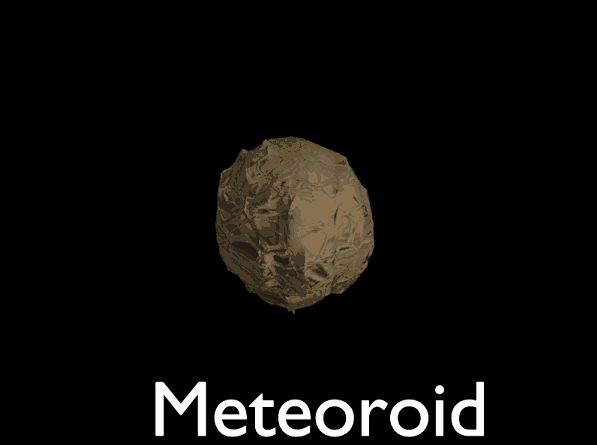meteoroid info Chemical Man
A meteoroid is a small rocky or metallic body in outer space.
Meteoroids are significantly smaller than asteroids, and range in size from small grains to one-meter-wide objects. Objects smaller than this are classified as micrometeoroids or space dust. Most are fragments from comets or asteroids, whereas others are collision impact debris ejected from bodies such as the Moon or Mars.
When a meteoroid, comet, or asteroid enters Earth's atmosphere at a speed typically in excess of 20 km/s (72,000 km/h; 45,000 mph), aerodynamic heating of that object produces a streak of light, both from the glowing object and the trail of glowing particles that it leaves in its wake. This phenomenon is called a meteor or "shooting star". A series of many meteors appearing seconds or minutes apart and appearing to originate from the same fixed point in the sky is called a meteor shower. If that object withstands ablation from its passage through the atmosphere as a meteor and impacts with the ground, it is then called a meteorite.
An estimated 15,000 tonnes of meteoroids, micrometeoroids and different forms of space dust enter Earth's atmosphere each year.
colour
The visible light produced by a meteor may take on various hues, depending on the chemical composition of the meteoroid, and the speed of its movement through the atmosphere. As layers of the meteoroid abrade and ionize, the colour of the light emitted may change according to the layering of minerals. Colours of meteors depend on the relative influence of the metallic content of the meteoroid versus the superheated air plasma, which its passage engenders:
Orange-yellow (sodium)
Yellow (iron)
Blue-green (magnesium)
Violet (calcium)
Red (atmospheric nitrogen and oxygen)
—Chelyabinsk Oblast, Russia
The Chelyabinsk meteor was an extremely bright, exploding fireball, known as superbolide, measuring about 17 to 20 meters across, with an estimated initial mass of 11,000 tonnes, as the relatively small asteroid entered Earth's atmosphere. It was the largest known natural object to have entered Earth's atmosphere since the Tunguska event in 1908. Over 1,500 people were injured mostly by glass from shattered windows caused by the air burst approximately 25 to 30 km above the environs of Chelyabinsk, Russia on 15 February 2013. An increasingly bright streak was observed during morning daylight with a large contrail lingering behind. At no less than 1 minute and up to at least 3 minutes after the object peaked in intensity (depending on distance from trail), a large concussive blast was heard that shattered windows and set-off car alarms, which was followed by a number of smaller explosions.


Leave a comment